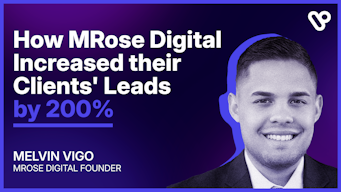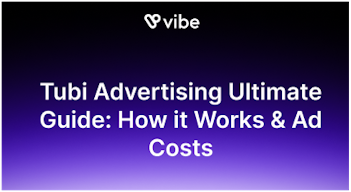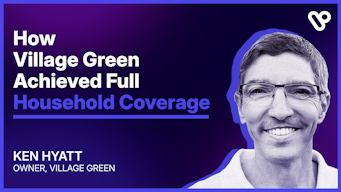Direct vs Programmatic Advertising: What's the difference?
Have you ever wondered how ads appear while you're browsing or why some ads seem perfectly timed, but others don’t match your interests?
If you’re a business owner, marketer or advertising professional, you might be asking:
- Should I use direct advertising or programmatic advertising to get better results?
- How can I spend my ad budget in the best way?
- How can I reach the right audience more effectively?
Choosing between Direct vs Programmatic Advertising can be difficult. Both have different strengths, and understanding them will help you improve your ad performance.
In this blog, we will explain Direct vs Programmatic Advertising:
💥 What they are and how they work
💥 The pros and cons of both—control in direct advertising vs automation in programmatic ads
💥 How to choose the right method for your business goals
💥 How combining both methods can help you reach more people and improve results
By the end of this blog, you will understand which type of advertising—Direct or Programmatic—is best for your business and how to use it for better results.
It's important to note that advertising has evolved significantly. Choosing the right approach can affect your ad performance, budget, and audience reach. Understanding the difference between direct and programmatic advertising will empower you to make smarter decisions for your business.
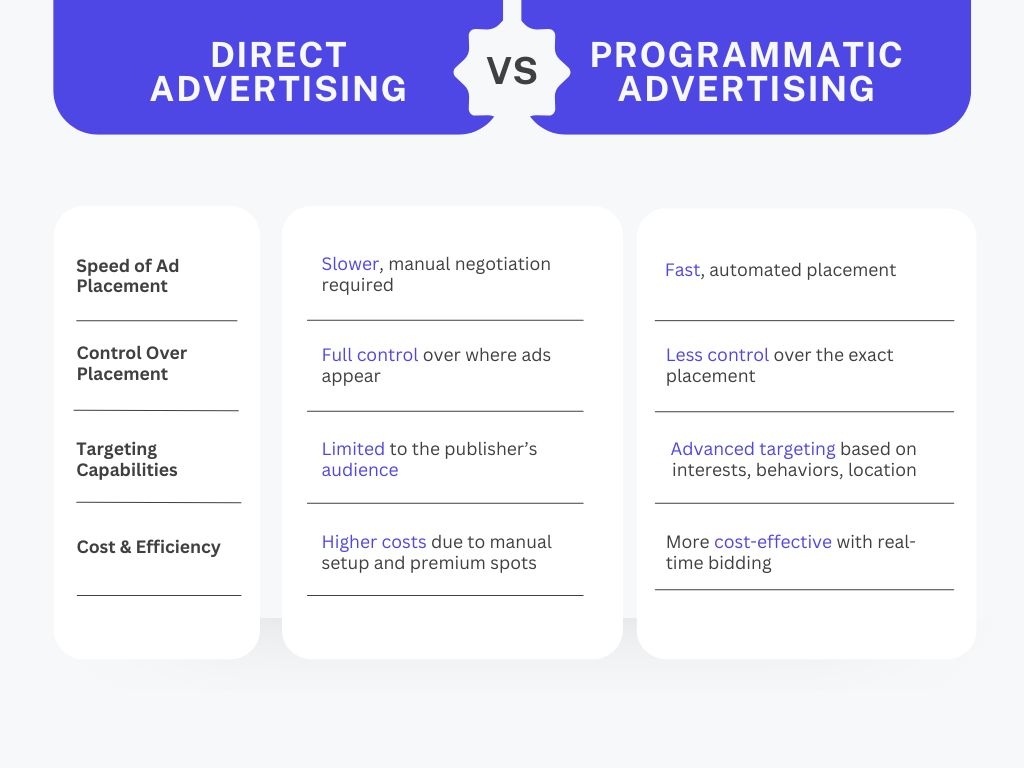
What is Direct Advertising?
Direct advertising occurs when you work directly with publishers. They decide on ad placement, costs, and terms through a manual process, which gives the advertiser more control over where their ads will be shown.
How Direct Advertising Works?
In direct advertising, a business picks a publisher that fits its audience and negotiates the terms of the deal, such as where the ad will appear, how long it will run, and the cost.
Once everything is agreed upon, the ad goes live in the chosen spots, like websites, TV channels, or print media.
Pros of Direct Advertising
- Complete Control: you choose exactly where their ads will appear.
- Brand Safety: Since you pick the placement, you know your ad won’t end up in the wrong place.
- Premium Placements: You can get direct deals and often get top spots, such as a homepage ad on a popular website.
Example:
Let’s say you run a luxury brand. Direct advertising can ensure a prime spot on a popular website or a TV ad during a major event, giving you control over where your ad is seen.
Cons of Direct Advertising
- Time-Consuming: The negotiation process can be lengthy and complex, requiring back-and-forth talks.
- Costly: Direct advertising is more pricey as it involves premium spots and more effort to set up.
Example:
If your business is trying to buy ad space on a popular streaming service, you might spend weeks negotiating placement and pricing, making the process slow and expensive.
Also Read: What is Media Planning?
What is Programmatic Advertising?
Programmatic advertising is a computerized way of buying ad space. Rather than manually negotiating, software and algorithms handle the bidding and buying process in real-time.
How Programmatic Advertising Work?
Programmatic advertising automates the buying and placement of digital ads by using real-time data and software.
You can set priorities like target audience and budget, and the system bids on relevant ad space through real-time auctions. The winning bids result in instant ad placements across websites or apps.
This process continuously tracks performance, optimizing the campaign for better results. This efficient and scalable advertising category allows precise targeting for improved ROI.
Pros of Programmatic Advertising
- Speed: These programmatic ads are placed very fast.
- Real-Time Changes: You can adjust the campaigns on the go based on performance.
- Wider Reach: Programmatic advertising allows businesses to place ads across many platforms, increasing exposure.
Example:
A clothing company could utilize programmatic advertising to target young adults interested in fashion. The software automatically places ads on websites where this audience is most active, simplifying the process and saving time.
Also Read: 11 Best Programmatic Advertising Examples
Cons of Programmatic Advertising
- Less Control: Since ads are placed automatically, you have less control over where the ads might appear.
- Brand Safety Risks: Sometimes, ads may appear next to content that doesn’t align with your brand’s image, jeopardizing the brand.
Example:
A luxury brand may face challenges with placement control if it discovers its ad appearing on a website that doesn't align with its image, potentially damaging its brand reputation.
Key Differences Between Direct and Programmatic Advertising
| Features | Direct Advertising | Programmatic Advertising |
|---|---|---|
| Speed of Ad Placement | Takes longer due to manual negotiations and set-up. | This happens almost instantly, thanks to automated software. |
| Control Over Ad Placement | you have complete control over ad placement. | The system chooses where the ads appear, which gives you less control. |
| Targeting Capabilities | Limited to the publisher’s audience. | Offers more advanced targeting, allowing you to reach specific groups based on interests, behavior, and more. |
| Cost and Efficiency | Costs more because of manual work and premium spots. | This is more cost-efficient due to automation and real-time bidding. |
1. Speed of Ad Placement:
- Direct Advertising is slower because it involves manual work. You must communicate with publishers, negotiate deals, and arrange everything by hand. This can take a lot of time.
- On the other hand, Programmatic Advertising is much faster. The software handles everything automatically, meaning ads can be placed almost instantly without delays.
2. Control Over Ad Placement:
- Direct Advertising gives you full control over where your ads appear. You can choose specific websites, apps, or locations for their ads. This control level can benefit businesses that want to be very selective about their placements.
- In contrast, Programmatic Advertising gives you less control. The system decides where the ads will appear based on your chosen settings. While this can save time, it also means that you may not have as much say over the exact placement.
3. Targeting Capabilities:
- Direct Advertising usually limits you to the audience of the chosen publisher or website. This means you can only reach those who visit that site.
- However, Programmatic Advertising offers more advanced targeting. It allows you to reach specific groups of people based on their interests, behaviors, location, and other factors. This makes it easier to target the right audience across many different websites and apps.
4. Cost and Efficiency:
- Direct Advertising tends to have higher costs. This is because of the manual work involved; you often pay for premium ad spots.
- In comparison, Programmatic Advertising is generally more cost-efficient. As it’s automated and uses real-time bidding, businesses can often save money while reaching a wider audience.
Which Advertising is Right for Your Business?
Let’s start by figuring out when to choose each one!
| Approach | When to Choose | Key Benefits | Example |
|---|---|---|---|
| Direct Advertising | Need control and premium placement | Full control, top visibility | Luxury brands securing prime spots |
| Programmatic Advertising | Want wider reach with less effort | Fast, automated, data-driven targeting | Clothing brand targeting young adults |
| Combining Both | Want to maximize impact with both methods | Control + efficiency | Retail company using direct and programmatic ads |
When to Choose Direct Advertising?
Direct advertising might be the better choice if your brand values control and premium placement. This method works well for businesses that want to ensure their ad is seen in the right place at the right time.
When to Choose Programmatic Advertising?
Programmatic advertising is a great option for reaching a wider audience with less manual effort. It’s perfect for companies that need fast, data-driven placements across various platforms.
Combining Both Approaches for Maximum Impact
Many businesses use a combination of direct and programmatic advertising.
For example, they might use direct advertising to obtain key placements at key times while using programmatic to maintain consistent visibility across multiple channels.
Let's say a retail company might opt for direct advertising during its holiday campaign by securing prime ad space on popular websites while simultaneously using programmatic ads on social media to expand its reach.
This strategy can create a greater impact by effectively combining direct and programmatic advertising approaches.
How Vibe Simplifies TV and Streaming App Advertising?
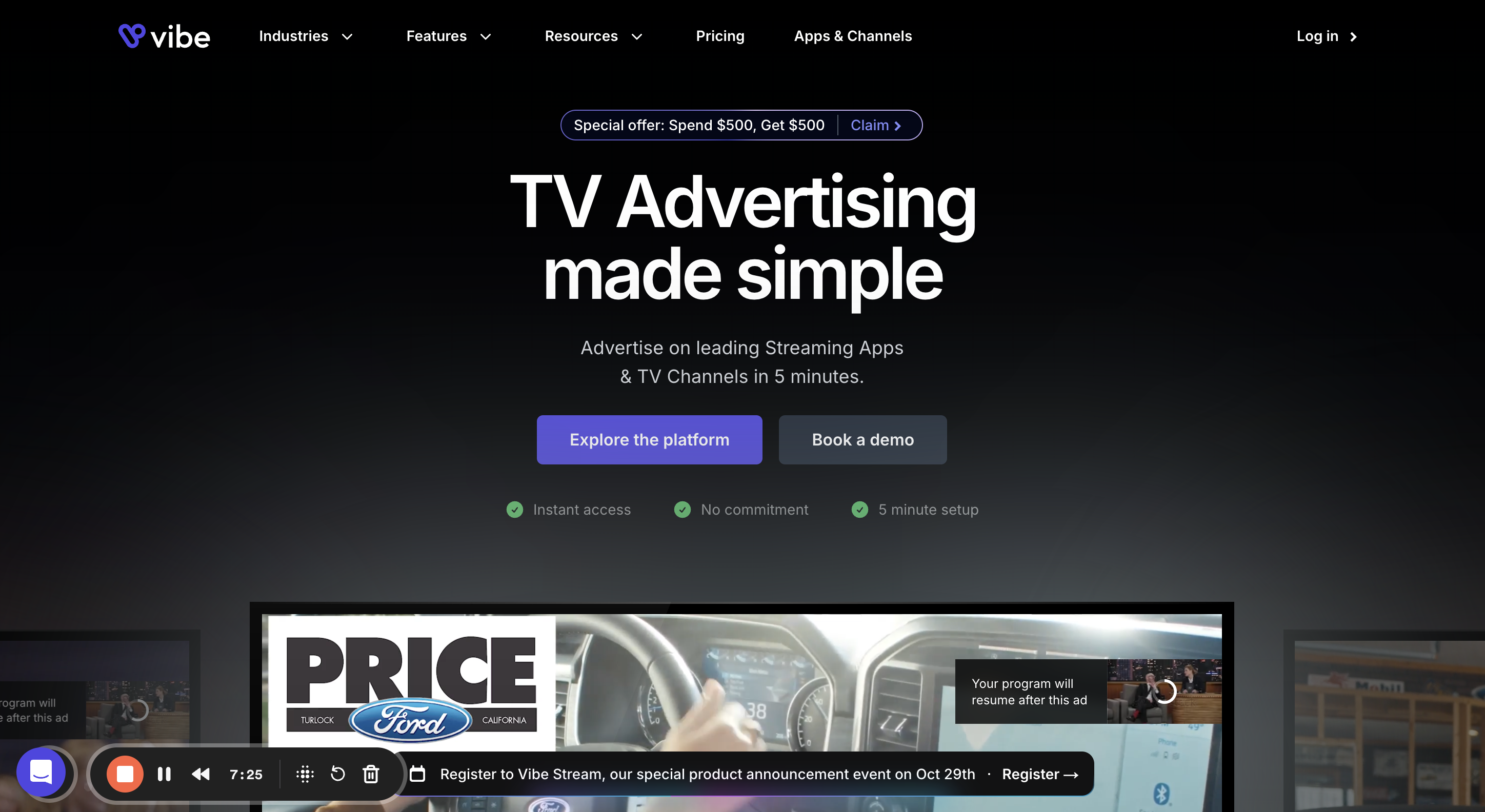
Vibe is a platform that simplifies TV advertising for businesses of all sizes. Users can launch targeted ad campaigns on leading streaming apps and TV channels.
Here are 5 essential features of Vibe:
- Targeting: You can reach the right audience based on demographics, interests, and purchase intent, ensuring your ads hit the mark.
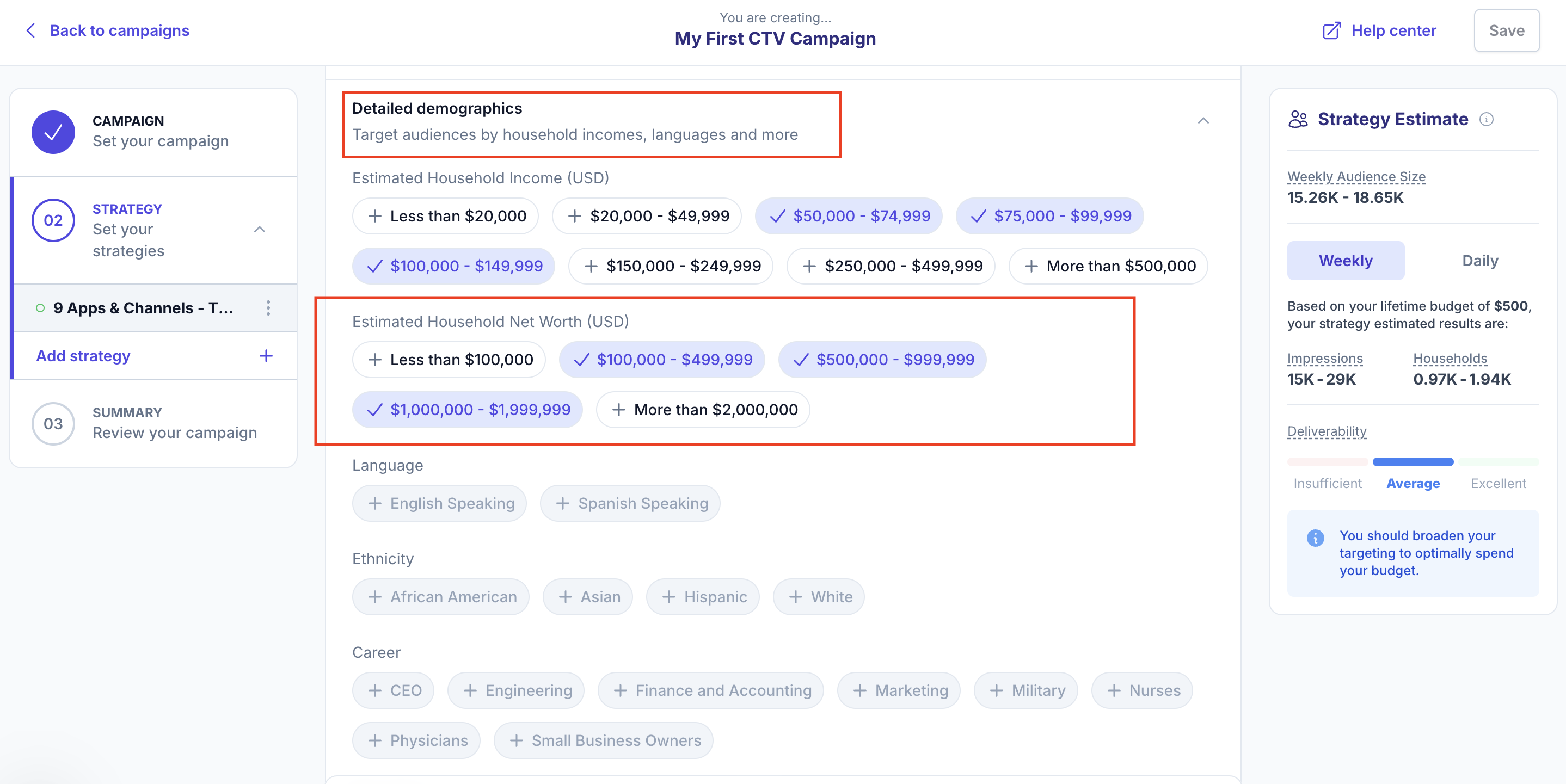
- Campaign Management: You can set up and manage TV ad campaigns with full control, delivering ads to top streaming apps and channels in just five minutes.
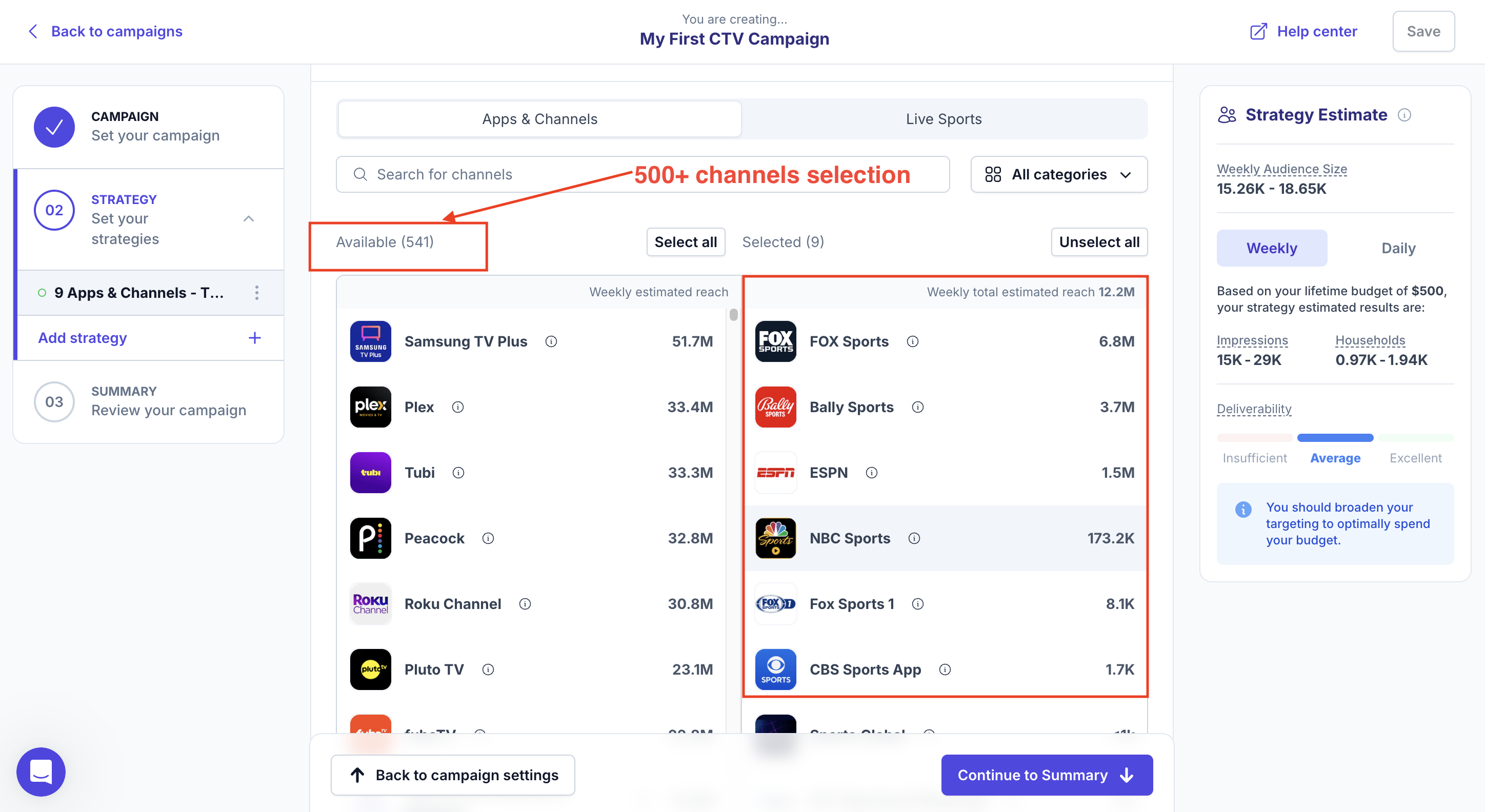
- Real-Time Reporting: With real-time analytics, you can easily track the performance of your campaigns and make immediate adjustments for better results.
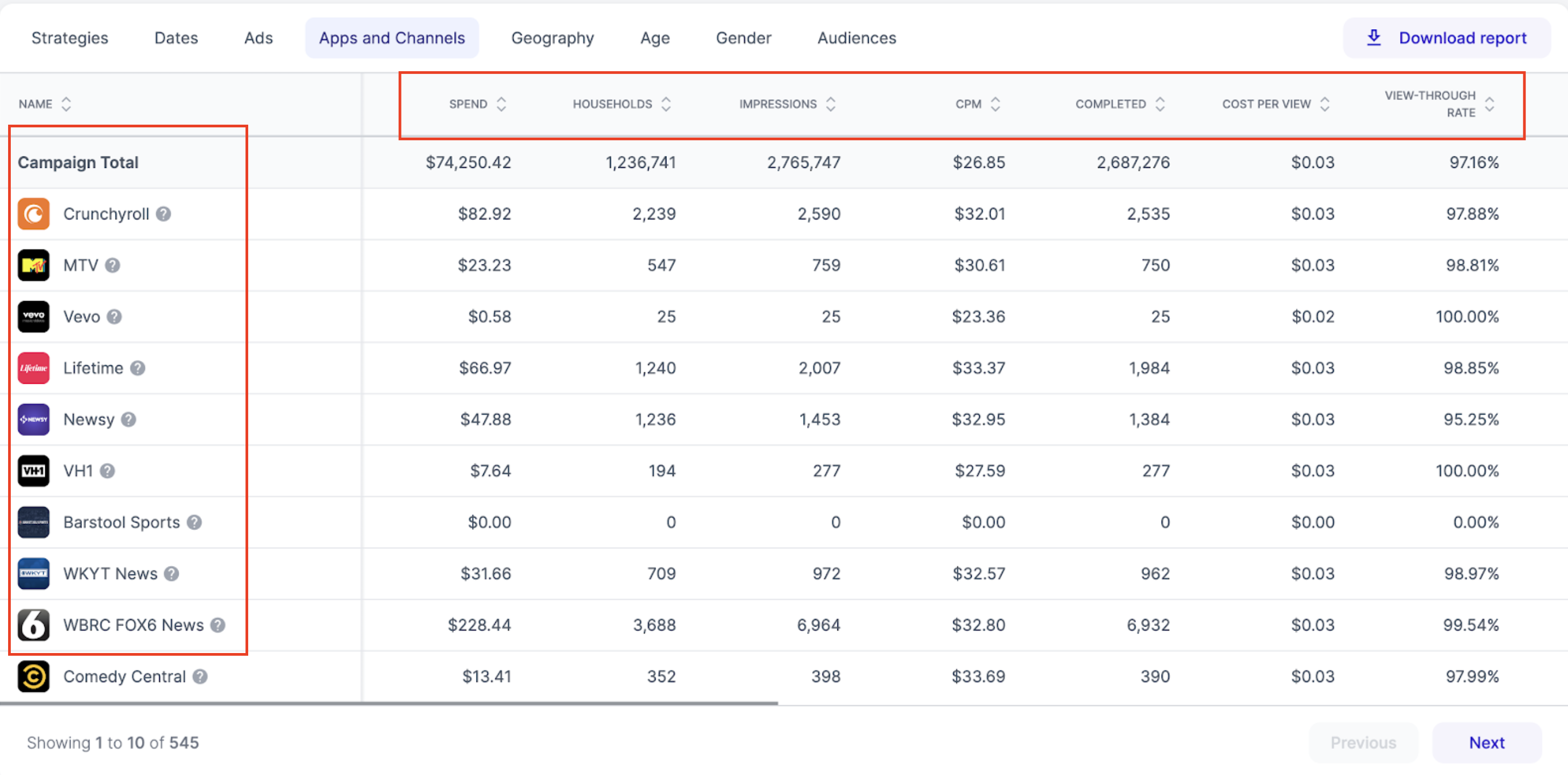
- Creative: You can showcase your ads next to the content your audience loves with flexible, creative options that make your campaigns stand out.
- Billing & Customer Support: You can use straightforward billing and dedicated customer support to ensure your advertising experience is smooth.
Bridging the Gap Between Direct and Programmatic
Vibe combines the control of direct advertising with the speed and efficiency of programmatic ads. It helps businesses easily advertise on TV and streaming apps.
Benefits of Using Vibe for TV Advertising
- Easy Setup: Vibe makes it simple to launch TV ads without the long negotiation process.
- Targeting Made Easy: You can reach the right audience on streaming apps or TV.
- Real-Time Adjustments: It lets you make quick changes to your campaign while it’s live to improve performance.
Example:
Let’s say you want to target sports fans who are watching a major event. With Vibe, you can set up a campaign and target your audience, adjusting ad placement in real-time.
Final Thoughts on Direct vs Programmatic Advertising
🎉 You did it!
You’ve made it to the finish line.
Let’s take a quick look back at what we’ve learned:
- We broke down the basics of Direct and Programmatic advertising and how they differ.
- Talked about the pros and cons of each approach, from more control with Direct to the automation magic of Programmatic.
- Highlighted when to use each one, depending on your goals and budget.
- Explained how both strategies can work together using Vibe to boost your ad performance.
Now, if we had to sum it up, it all comes down to two key points:
☝🏼 Direct advertising gives you control.
This is the way to go when you want hands-on management, personal relationships with publishers, and the guarantee of premium placement.
Perfect if you're aiming for precision!
✌🏼 Programmatic advertising saves you time.
Want your ads to be everywhere without lifting a finger?
Programmatic’s got your back. It uses algorithms and data to get your ads in front of the right audience—without you micromanaging.
So, which one's best?
Spoiler alert: They’re both awesome, just for different reasons. Use them together with Vibe to get the best of both approaches for a perfect balance of control and automation.
Happy advertising, and may your campaigns always hit their targets!
Book a free demo to learn more!
FAQs
1. Which is better for my business: Direct or Programmatic Advertising?
If your business values control and premium placement, direct advertising might be better. If you're looking for wider reach with automated, data-driven targeting, programmatic is the way to go. Combining both can maximize impact.
2. Can I use both Direct and Programmatic Advertising together?
Yes! Many businesses combine both strategies—using direct advertising for premium placements and programmatic ads for broader reach across multiple channels.
3. Is Programmatic Advertising more cost-effective than Direct Advertising?
Programmatic advertising is generally more cost-efficient, as it involves real-time bidding and automated ad placements, while direct advertising tends to be more expensive due to manual setup and premium spots.
4. How do I decide between Direct and Programmatic Advertising for my next campaign?
Consider your goals: Use direct advertising if you need control and premium placements, and opt for programmatic if you want wider reach and data-driven optimization.

